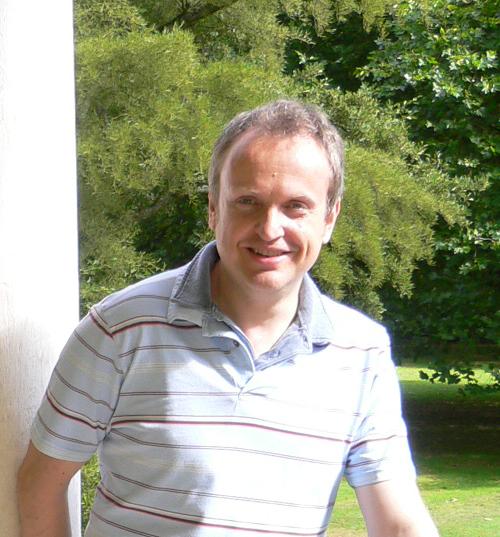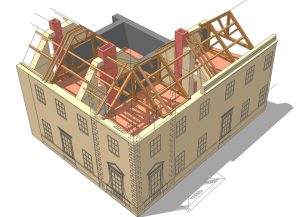

I first became interested in Lydiard House after a visit in 1983 to see the new extension project with the Borough Architect. It was a very cold and wet February morning and as there was little progress on site the Clerk of the Works and I sneaked into the House to get warm. There he told me the story of the 1950s restoration project whilst we toured the State Rooms and described his own involvement over many years, and so I was hooked.
I went on to qualify as an Architect and founded a practice in Holland Park specialising in high-end residential design including country houses. Lydiard house was always in my mind as I sought to reconcile our various clients’ aspirations for houses with classical grandeur combined with a comfortable and homely atmosphere, which is something that Lydiard House achieves very successfully. I was intrigued to understand what makes the house so agreeable, and in 1998 I approached Sarah Finch-Crisp the then Keeper to investigate.
Unfortunately, the majority of the records relating to the House had been lost or destroyed so with an enthusiastic band of young architects we descended on the house for a week to survey and record every aspect of the architecture including the ornamental plasterwork. Whilst the team was sometimes frightened by stories of ghosts from the staff, we made very good progress so that I could piece together the complex design history of the house which led to the presentation of a paper and a talk to the Friends in 2000.
Afterwards I remained in contact with the Friends as various threats to Lydiard Park emerged with increasing frequency where my professional knowledge could help. I was pleased to help lobby Swindon Council in 2002 to accept the lottery grant for the restoration of the Park, and was able to present evidence to convince Swindon Council that their Jungle Parks scheme should not obscure key views of the house from the historic landscape.
In 2010 I was pleased to join the board of trustees as we were soon occupied resisting Persimmon’s housing development inside the essential setting of the historic park. After two planning appeals when we presented expert testimony and a computerised model as evidence, the development on Windmill Hill was regrettably approved although somewhat smaller in size.
 In 2013 I took time-out to complete a Masters in Heritage at Bath University which gave me the opportunity to research some favourite projects. I was able to un-ravel the complexities of the structure of the South Tower and complete further details of the 17th Century plasterworks in the Dining Room. But by 2014 Swindon Council was arranging for the disposal of Lydiard House and Park to a private company and so the Friends with support from across the world lobbied hard to stop the transfer. After some back-tracking and a dubious bidding process the plans for privatisation were shelved.
In 2013 I took time-out to complete a Masters in Heritage at Bath University which gave me the opportunity to research some favourite projects. I was able to un-ravel the complexities of the structure of the South Tower and complete further details of the 17th Century plasterworks in the Dining Room. But by 2014 Swindon Council was arranging for the disposal of Lydiard House and Park to a private company and so the Friends with support from across the world lobbied hard to stop the transfer. After some back-tracking and a dubious bidding process the plans for privatisation were shelved.
In 2016 we again mustered ourselves to oppose a housing development by Taylor Wimpey who periodically try to exploit the cache of Lydiard Park. The developer conducted a public consultation which the trustees attended only to eject us for challenging their project! Unfortunately, bullying tactics such as these by developers are all to-much the norm these days.
The work of the Friends is continually changing as we seek to protect and promote the importance of Lydiard House, the Park and St Mary’s Church for future generations to enjoy. I have had such fun being a member of the Friends and it has been my privilege to be involved with such a wonderful, generous and kind group of people. Lydiard House continues to be a great influence on my architecture with more to learn when I get around to researching the servants wing and the earliest part of the house. ‘
Michael Gray’s survey of Lydiard House can be seen in Friends of Lydiard Tregoz Report No 33.